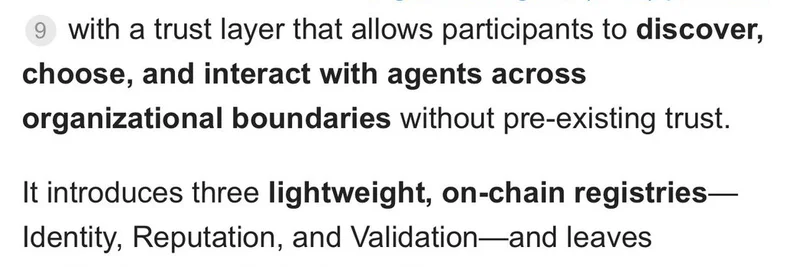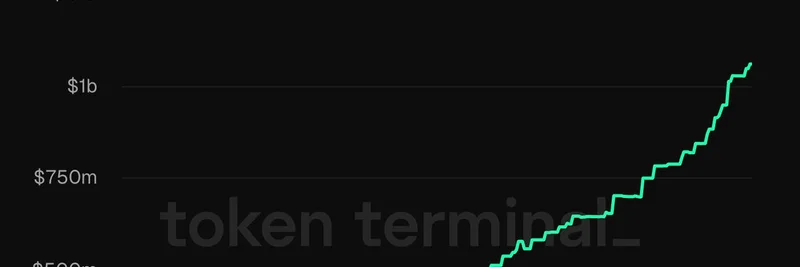Hey there, crypto enthusiasts! If you've been keeping an eye on the intersection of AI and blockchain, you might have caught wind of something exciting bubbling up in the Ethereum ecosystem. Recently, @binji_x dropped a tweet that's got everyone talking about ERC-8004, dubbed "Trustless Agents." It's not just another technical update—it's a glimpse into how Ethereum could become the backbone for a future filled with autonomous AI agents. Let's break it down step by step, shall we?
First off, binji_x, who works at the Ethereum Foundation (previously at Optimism and Coinbase), shared this insightful post highlighting a proposal from @DavideCrapis. The tweet paints a vivid picture of why Ethereum is primed to be the "trust substrate" for AI. Imagine millions of AI agents zipping around the internet, transacting, negotiating, and even forming coalitions like DAOs. Where do they anchor their identities and reputations? Not on some fragile corporate server, but on a neutral, immutable ledger like Ethereum.
Diving into ERC-8004: The Basics
At its core, ERC-8004 is an extension to the Agent-to-Agent (A2A) protocol. If you're new to this, A2A is like a common language for AI agents to communicate. But communication alone isn't enough—agents need trust to interact, especially across different organizations without any prior relationships. That's where ERC-8004 steps in, adding a lightweight trust layer.
The standard introduces three on-chain registries:
- Identity: A way for agents to prove "I am who I say I am" with verifiable anchors.
- Reputation: An unchangeable record of an agent's past behavior, like a blockchain-based resume.
- Validation: Proofs that confirm an agent's actions align with their claims.
These registries keep things simple and on-chain for security, while leaving the nitty-gritty application logic off-chain. This setup allows agents to discover, choose, and interact with each other trustlessly. As binji_x puts it, it's about enabling agents that have never "met" to transact confidently, sketching the outlines of a true machine economy.
You can check out the full proposal on GitHub here. It's still in public discussion, with involvement from the Linux Foundation and A2A stakeholders to refine it further.
Why This Matters for Ethereum and AI
Binji_x's thought experiment hits home: In a world of autonomous agents handling tasks across banks, social media, and more, you wouldn't want their "memory" tied to a deletable database. Ethereum's immutability makes it the ideal neutral ground. Smart contracts aren't just for humans anymore—they're how we'll interface with AI, and this ledger is how AIs will chat among themselves.
This isn't sci-fi; it's practical crypto innovation. ERC-8004 could pave the way for AI agents to negotiate deals, form alliances, and build reputations in a decentralized manner. For meme token creators and blockchain practitioners, think about how this could supercharge community-driven projects. Imagine AI agents managing meme coin treasuries or automating viral marketing campaigns, all anchored securely on Ethereum.
The Bigger Picture: Building a Sci-Fi Future
As binji_x wraps up, this is just the start. Ethereum is gearing up for AI not by running massive models on-chain (that's computationally heavy), but by providing the trust layer that lets AI thrive off-chain while staying verifiable. If you're into blockchain tech, now's the time to get involved—lay the foundations with the community and watch this evolve.
What do you think? Could ERC-8004 be the spark for a decentralized AI revolution? Drop your thoughts in the comments below, and stay tuned to Meme Insider for more updates on cutting-edge crypto developments that could impact your favorite meme tokens.


